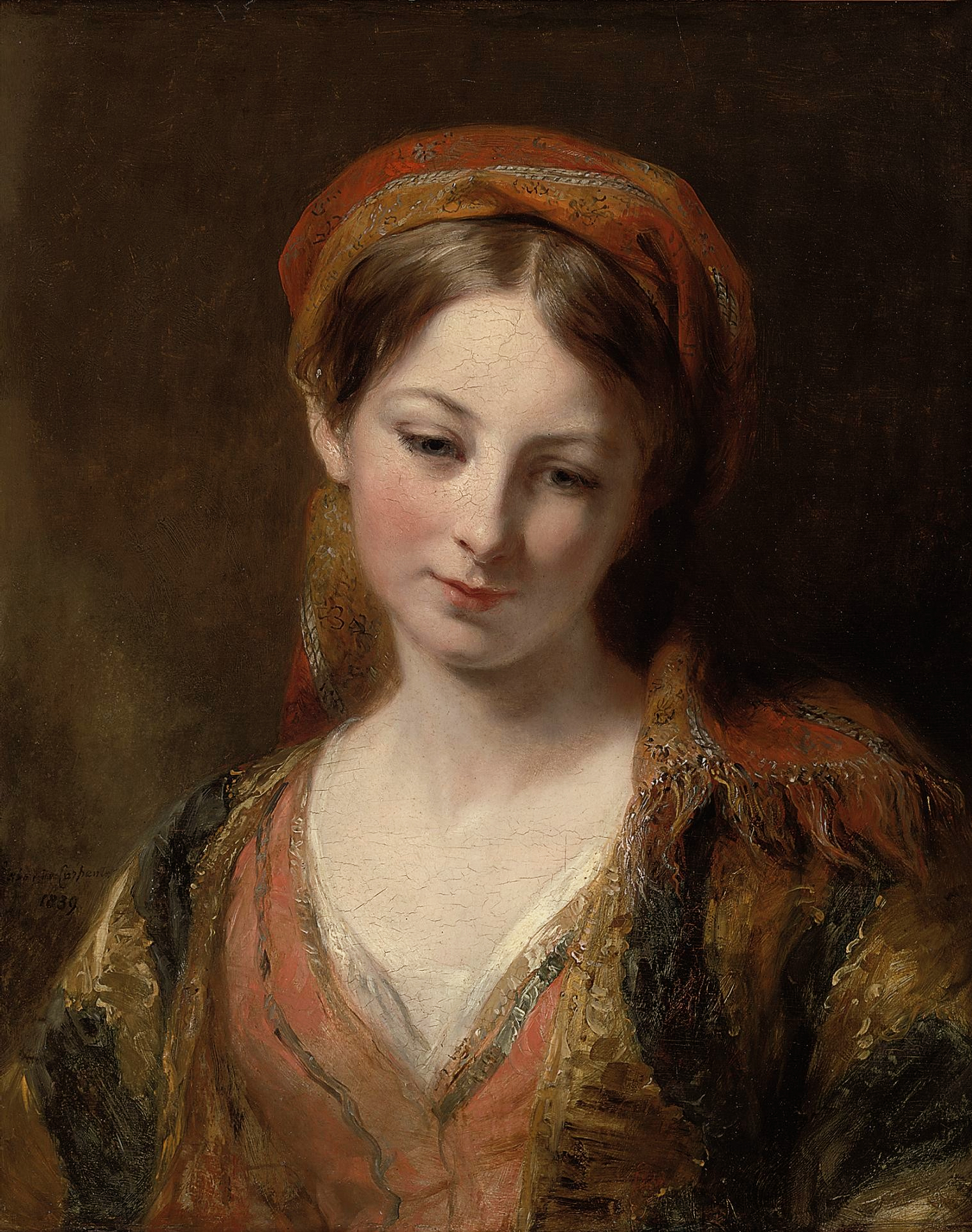|
Portrait Of Richard Parkes Bonington
''Portrait of Richard Parkes Bonnington'' is a portrait painting by the English artist Margaret Sarah Carpenter, from ''c.'' 1827-1830. It depicts her fellow artist Richard Parkes Bonington. Bonington painted landscape painting, landscapes and cityscapes in the romantic style. He enjoyed success at the Royal Academy's Summer Exhibition in 1828 but died a few months later of tuberculosis at the age of twenty five. He was a friend of Carpenter, a noted portraitist of the Regency era, Regency and early Victorian era. It was exhibited at the Society of British Artists in 1833. Reviewers noted the Pallor, pale look of Bonington in her portrait. Today it is in the collection of the National Portrait Gallery, London, National Portrait Gallery in London, having been acquired in 1877. A copy of the mezzotint version of the work by John P. Quilley is also in the collection. References Bibliography * Barber, Tabitha (ed.) ''Now You See Us: Women Artists in Britain, 1520-1920''. Tate ... [...More Info...] [...Related Items...] OR: [Wikipedia] [Google] [Baidu] |
Margaret Sarah Carpenter
Margaret Sarah Carpenter (''née'' Geddes; 1793 – 13 November 1872) was an English painter. Noted in her time, she mostly painted portraits in the manner of Sir Thomas Lawrence (painter), Thomas Lawrence. She was a close friend of Richard Parkes Bonington. Early life Carpenter was born in Salisbury, the daughter of Captain Alexander Geddes, who was of an Edinburgh family, and Harriet Easton. She was taught art by a local drawing-master. Her first art studies were made from the pictures at Longford Castle, belonging to the Earl of Radnor. Career In 1812, one of Carpenter's copies of the head of a boy was awarded a medal by the Society of Arts, who awarded her another medal in 1813, and a gold medal in 1814. She went to London in 1814, and soon established her reputation as a fashionable portrait painter. She exhibited a portrait of William Pleydell-Bouverie, 3rd Earl of Radnor, Lord Folkestone at the Royal Academy in 1814, and a picture entitled 'The Fortune Teller' at the Bri ... [...More Info...] [...Related Items...] OR: [Wikipedia] [Google] [Baidu] |
Portraitist
A portrait is a painting, photograph, sculpture, or other artistic representation of a person, in which the face is always predominant. In arts, a portrait may be represented as half body and even full body. If the subject in full body better represents personality and mood, this type of presentation may be chosen. The intent is to display the likeness, personality, and even the mood of the person. For this reason, in photography a portrait is generally not a snapshot, but a composed image of a person in a still position. A portrait often shows a person looking directly at the painter or photographer, to most successfully engage the subject with the viewer, but portrait may be represented as a profile (from aside) and 3/4. History Prehistorical portraiture Plastered human skulls were reconstructed human skulls that were made in the ancient Levant between 9000 and 6000 BC in the Pre-Pottery Neolithic B period. They represent some of the oldest forms of art in the Middle Eas ... [...More Info...] [...Related Items...] OR: [Wikipedia] [Google] [Baidu] |
Paintings In The National Portrait Gallery, London
Painting is a Visual arts, visual art, which is characterized by the practice of applying paint, pigment, color or other medium to a solid surface (called "matrix" or "Support (art), support"). The medium is commonly applied to the base with a brush. Other implements, such as palette knives, sponges, airbrushes, the artist's fingers, or even a dripping technique that uses gravity may be used. One who produces paintings is called a painter. In art, the term "painting" describes both the act and the result of the action (the final work is called "a painting"). The support for paintings includes such surfaces as walls, paper, canvas, wood, glass, lacquer, pottery, leaf, copper and concrete, and the painting may incorporate other materials, in single or multiple form, including sand, clay, paper, cardboard, newspaper, plaster, gold leaf, and even entire objects. Painting is an important form of visual arts, visual art, bringing in elements such as drawing, Composition (visual art ... [...More Info...] [...Related Items...] OR: [Wikipedia] [Google] [Baidu] |


